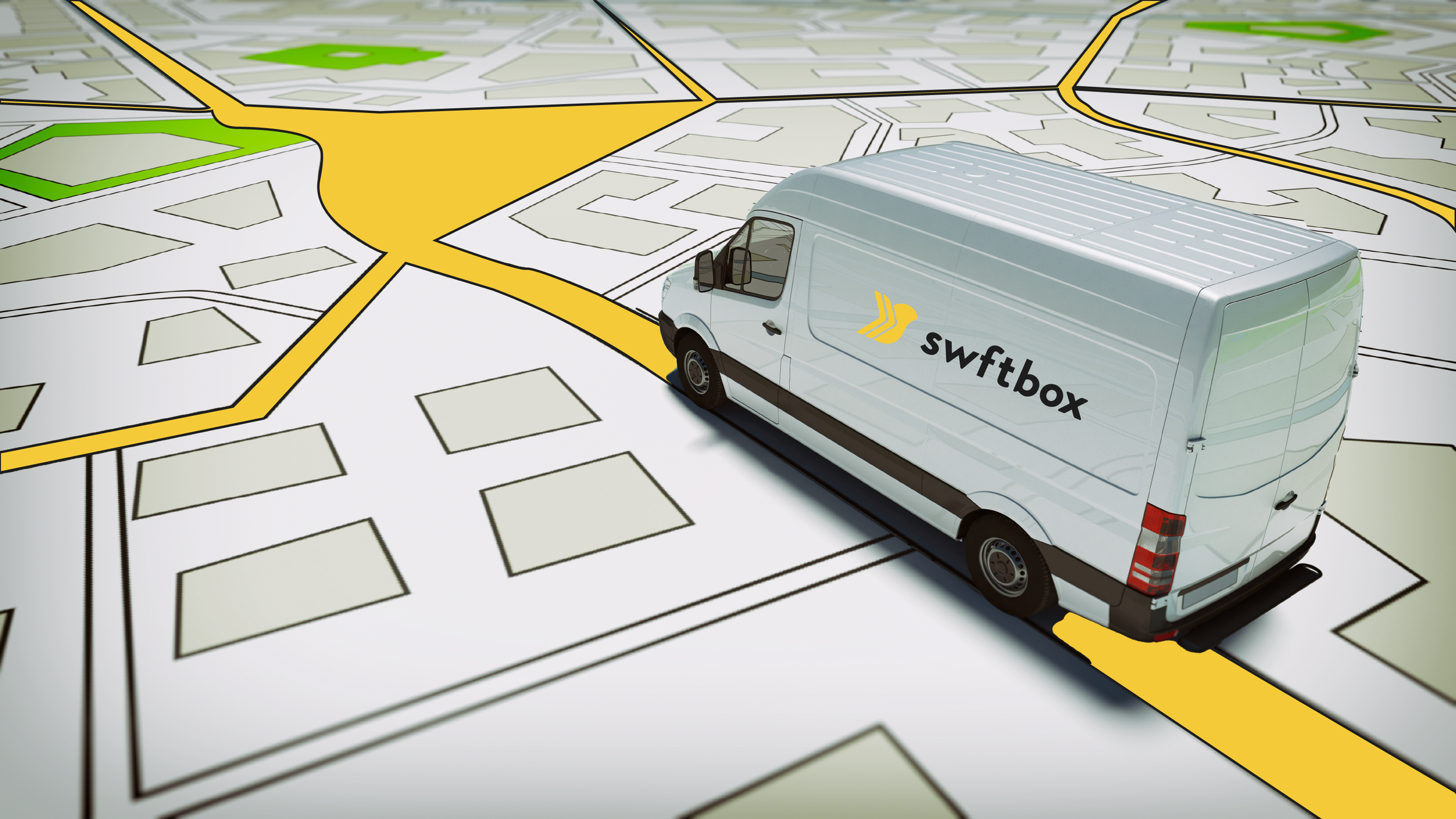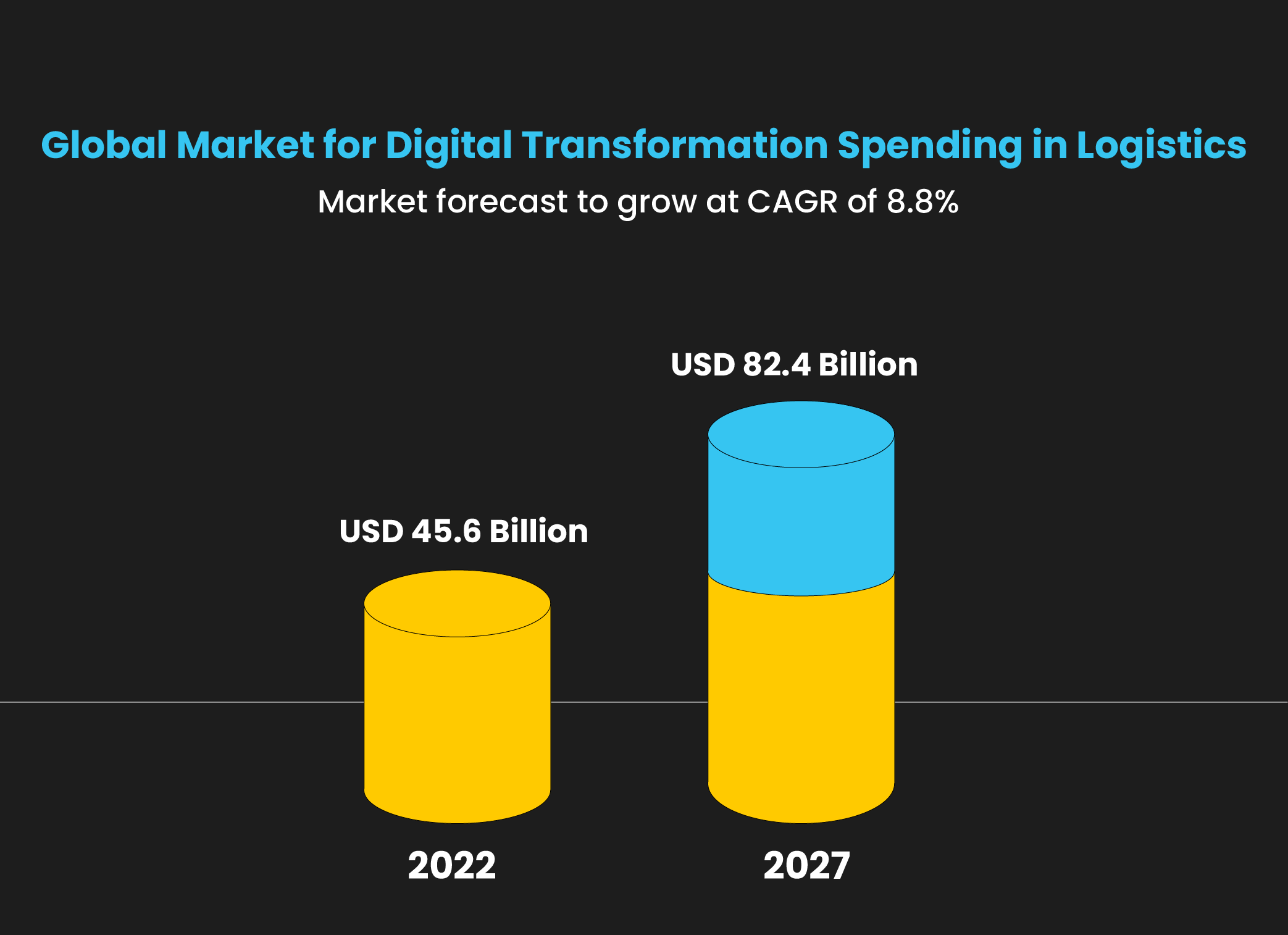Top 5 Digital Solutions Transforming Logistics Today
The logistics industry has gone digital, and these five technologies are leading the way.
When future industry experts look back on the 2020s, they’ll highlight the rapid shift to digital logistics solutions as a key turning point for the global shipping sector.
Like a bolt from the blue, the pandemic shook the global supply chain to its core. Online consumer demand shot up, yet mobility restrictions and supply-chain bottlenecks stopped direct-to-consumer (D2C) businesses from meeting them.
The industry needed quick answers, but traditional logistics operations weren’t supplying them. Business leaders reliant on these old-world systems found their hands tied by:
Fragmented logistics processes where stakeholders are siloed from each other, and the rest of the process
Costly bottlenecks and wasted journeys caused by inefficient communication
A lack of flexibility when it comes to adapting to unforeseen issues.
Yet, there was a silver lining to the dark cloud that engulfed the industry.
New digital technologies, already present in many global sectors, had begun to spread into the logistics industry.
Quick, smart, and less reliant on the analog systems that hindered cross-border trade, they promised to revolutionize every aspect of the business supply chain, from inventory management to automated delivery notifications.
Every logistics provider worth their salt knew they had to act if they wanted to compete at the highest level. And quick.
The impact has been dramatic. From a standing point of $45.6 billion in 2020, the global spend on digital tools in the logistics sector is projected to hit $82.4 billion by 2027, a rise of 80%, according to marketing data source Research and Markets.
The rapid rise of digital logistics across the world
Source: Research and Markets
A Forbes Insights report backs this up further. Assessing the ‘breakneck speed’ of the digital transition in logistics, it found that just under two-thirds of executives in the sector say their business processes are ‘undergoing profound transformation’.
To be more specific, they expect this new wave of technology, including blockchain, the Internet of Things, and telematics, to greatly enhance visibility across the supply chain, with artificial intelligence (AI) and machine learning helping to boost customer satisfaction.
But what does this profound transformation look like, and how will it shape the future of the logistics industry?
Want a glimpse at the future of digital logistics and how it will benefit your business? Swftbox’s five-minute registration will put you on the track to maximum efficiency, reduced costs, and an upturn in revenue.
Why digital technologies in logistics are important
Digital technologies in logistics are spreading like wildfire simply because they’re addressing industry pain points outlined at the start of this article.
While traditional systems kept stakeholders at arm’s length from each other, with just one director overseeing different areas, smart logistics solutions offer every member an overview of the whole ecosystem. Someone working in warehouse inventory can see a shipment status during last mile tracking, and vice versa.
Such transparency makes it much easier to spot errors that lead to major bottlenecks. Everyone has the power to flag an issue, and be part of the decision-making process.
Predictive tools, too, give managers the power to make important tweaks that minimize the impact of external events. These use techniques like smart addressing to calculate optimal delivery routes that cut down on wasted journeys and fuel expenses, not to mention eco-destructive emissions. These also quicken the supply-chain workflow and help meet present-day customer demands, like same-day deliveries.
The speed and efficiency of warehouse operations are also dramatically boosted by automated digital processes. Gone are the clipboards and written checklists of old, to be replaced by mobile applications and web-based systems that carry out menial tasks such as data entry and inventory orders. Managers can then put employees to work with more complex tasks that aid logistic business growth.
Quicker and more efficient processes across the supply chain inevitably lead to huge cost savings, which quickly pay back the cost of switching to digital systems, and then start to bolster a delivery company’s bottom line.
In short, cutting-edge logistics tools provide huge opportunities for delivery companies over the next decade, to the point that the logistics sector in 2030 will be unrecognizable to the one we saw before the pandemic.
the 5 digital solutions transforming the modern supply chain
The recent change in consumer expectations has taken many in the logistics industry by surprise.
While retailers are ready to prepare and ship items on a quick turnaround, and couriers are ready to take them, a fragmented logistics ecosystem is creating a disconnect between the two.
The good news is that digital solutions are bridging that gap, using a myriad of new technologies that automate routine tasks, enhance visibility and unite the delivery supply chain to work as a sum of its parts.
Here are five examples of cutting-edge digital technologies that are transforming the logistics landscape.
AI and machine learning
The field of artificial intelligence (AI) and machine learning is so extensive in logistics alone that it’s worth breaking it down into two key areas.
First, automation is not just a buzzword, but a new world order in carrying out routine tasks. By using AI and ML to glean valuable information from vast big data sets, it speeds up and optimizes simple but crucial processes, which in logistics includes:
Automatic inventory management, such as stock updates
Extracting shipment details to fill out essential forms
Pooling together data about transport routes to build smart routes for couriers
Real-time tracking of high package volumes
Receiving instant notifications of delays and disruptions, as well as delivery confirmations.
This trend is set to deepen further, with US research firm Gartner predicting full supply-chain automation by 2035.
Secondly, predictive analytics use AI and ML to act as a super-accurate crystal ball that allows firms to stay one step ahead of short-term future events. These use complex mathematical algorithms to obtain nuggets of useful info from vast real-time data sources and produce forecasting models, optimal inventory levels, and even predict buyer decisions.
More and more D2C companies and retailers are investing in software that combines the above functions. Designed to optimize the fulfilment process, as well as forecast and manage supply chain risks, they’re showing the full scope of how AI and ML is changing the face of the logistics industry.
2. Robotics and autonomous vehicles
Automation will also have a strong physical presence in the digital logistics era, both inside and outside the warehouse.
Robotics is leading the way indoors, where industrious androids are working in tandem with humans to perform repetitive picking, packing, and sorting tasks, including smart forklift trucks. Improving technology means that some bots can even use AI tools to load vehicles.
It’s an area ripe for expansion, too. According to research firm Business Wire, 80% of warehouses have no automation at all, offering a potential competitive advantage for companies who adopt it.
Outdoors, road transport is the most common logistics method, including the all-important last-mile delivery process, yet it’s one that’s also at risk of truck driver shortages and simple human error.
A growing autonomous vehicle (AV) market is helping major industry players sidestep human-related inefficiencies by investing in self-driving trucks, cars, and even drones. DHL piloted a test run for its Pilotcopter in 2016, a parcel-carrying drone that acts as a ‘flying postman’, and is now ready for it to enter the mainstream.
There are even startups dedicated to building and operating these delivery vehicles. Nuro is a US robotics company that runs small custom-designed cars that are optimized for safe deliveries, including special en-route features that protect pedestrians.
By connecting self-sufficient machinery and vehicles to digital logistics, firms are now able to increase productivity, remove human error, and save resources by dedicated manpower to more complex tasks.
3. Internet of Things (IoT) and blockchain tracing
It’s easy to look at terms like ‘Internet of Things’ and ‘blockchain’ and feel a little lost.
Yet a simple way of viewing the IoT is as a giant, digitally-connected engine, with blockchain serving as the oil that ensures everything is working smoothly and safely.
In terms of digital logistics, we’ve looked at how automation and robotics simplify and optimize crucial tasks, but the IoT is the invisible network that digitally connects all these components together, with blockchain acting as a digital ledger.
Global spending on IoT systems quadrupled between 2015 and 2020, and the pandemic added further momentum to its adoption among transport shippers.
The growing importance of IoT in global logistics
Source: BCG (via Mordor Intelligence)
But how can we break this trend down into specific use cases in the digital logistics industry today?
Well, if we look closely, we can see how the IoT acts as a golden thread that connects various stages of the logistics process together.
At the warehouse level, RFID tags and smart capacity sensors automatically track inventory levels and notify users of low stock levels and empty spaces. These warehousing devices are connected to transport-linked software that determines how many vehicles are required, as well as detecting the fleet’s maintenance needs.
Integrated with Blockchain technology, these IoT devices can also produce digital Bills of Lading (BOLs), a type of smart contract that creates transparency along the supply chain and allows every member to trace where products are.
There’s also one last major plus: because blockchain is virtually hack-proof, the chances of data theft or cyber attack are almost zero, casing the logistics process with an iron-clad layer of security.
4. Cloud-based logistics tech
With all of this information at their fingertips, logistics stakeholders need a convenient one-stop portal that allows them to access what they need.
This is where cloud technology comes in, more specifically SaaS delivery platforms, which integrate every step of the supply chain into an easy-to-use package that everyone can log on to.
To re-use the machine analogy, if the IoT devices are the engine, then cloud platforms act as the toolkit with which operators can easily spot problems and administer the correct course of corrective action, with every other stakeholder able to view it in real-time.
Modern cloud platforms are customizable and user-friendly solutions that let the user carry out multiple actions simultaneously. These might include:
Plug-and-play integration with virtual shopfronts
Delivery fleet management
Live shipment tracking
A real-time order system
Reporting and analysis tools that help improve performance
Because cloud platforms are designed to maximize efficiency, logistics companies find that they can upscale their operations while also cutting down on operating costs — a win-win in a challenging economic climate.
5. Third-party logistics (3PL)
Disruptive new technology isn’t just reforming in-house communications, it’s making it a lot easier to integrate third-party (3PL) service providers into the supply chain, reducing overheads and utilizing outside expertise as part of the bargain.
Fuelled by powerful socio-economic trends, the global 3PL market is set to hit $1.8 trillion by 2026, according to research firm Global Market Insights, as more ecommerce businesses choose to adopt them.
External providers can fill gaps in supply chain management (in areas with low in-house coverage), increase quality by specializing in one specific task, and cut costs by handling orders in bulk from several suppliers.
What’s more, advances in 3PL software make it easier to securely join existing IoT and blockchain systems without fragmenting the existing supply chain.
With over 60% of logistics companies now relying on external providers, according to Forbes Insights, the 3PL sector is going from strength to strength.
Looking for a digital logistics platform that incorporates all these solutions and more? Sign up to swftbox in just five minutes to find out how the latest technology can power your business to new heights.



